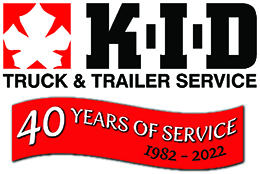
If transportation companies didn’t have enough operating challenges with supply chain disruptions, driver shortages and tight equipment availability, now it’s rising prices at the pumps. Gasoline prices have risen consistently since the middle of 2020 when the economy began the initial recovery after pandemic lockdowns. The cost of diesel has nearly doubled since last year and represents the second highest expenditure for fleets. It’s contributing to soaring inflation with concerns that higher diesel prices will become embedded in the cost of everything the consumer purchases.
The world is scrambling for oil after Russia’s invasion of Ukraine sent prices skyrocketing. The Brent crude price has surged more than 40% and reached as high as $ 130 per barrel on market expectations of limited oil supply. In Canada with the world’s third-largest reserves, Alberta’s crude output is at an all-time high reaching 4 million barrels per day. Suncor’s first quarter profits of $ 2.95 billion tripled from $ 821 million for the same period in 2021 and cash flow is the highest it’s been in the company’s history.
Why Are We Here?
The calls to further increase production are loud and growing but companies are reluctant to boost capital budgets even as they enjoy the benefits of higher cash flow. They’re still bruised from the 2014 to 2016 oil price collapse driven by surging supply that precipitated a 70% drop. Efficiency gains in shale oil producing lowered the break-even prices below the point most Canadian companies could afford to pull it out of the ground. Brent crude prices fell from an average of $110 per barrel between January 2011 and June 2014 to a low of US $29 per barrel in January 2016. With expectations of “peak oil” consumption on the horizon, OPEC made the decision not to cut oil production in November 2014 contributed to the precipitous decline in oil prices.
The focus on cutting global carbon emissions has made financing massive oil sands projects more expensive and long-term demand forecasts suggested the world would need less, not more by 2035. The huge mining and thermal investments required to extract oil sands bitumen cost billions of dollars and take years to build. Alberta could potentially squeeze more out of existing projects through forced efficiencies but increasing capacity in a meaningful way could take years. Producers need a clear signal from the Canadian government that it supports infrastructure development, although Trudeau’s Liberals promises to cap fossil fuel emissions is limited the industry’s growth potential.
Canada Natural, the country’s biggest producer plans to boost oil and gas output by 5% this year. Cenovus, Canada’s second largest producer said last December, their production guidance remains unchanged. The industry appears focused on paying down debt incurred during the pandemic and returning value to shareholders who are demanding companies keep a tight rein on spending. Despite surging 11-year highs, ever conservative and risk-adverse Canadian companies are wary of aggressively investing to boost production. Cenovus and Suncor are increasing capital expenditures for the first since 2014, providing evidence that balance sheets are healthy enough to merit spending after weathering the lows of the pandemic.
What Can Trucking Companies Do Now?
While there aren’t signs of relief at the gas pumps, there are achievable means for fleets to optimize fuel consumption and limit rising costs. Aggressive driving like speeding, rapid acceleration and hard braking can lower diesel consumption by 15 – 30%. Speeding is the leading cause of fuel waste and being eight kilometers over the highway posted speed limit can decrease fuel economy by 7%. When possible, using cruise control and averaging 1,250 – 1,350 revolutions per minute (rpm) helps drivers maximize their mileage.
Some idling is necessary such as waiting in traffic, although excessive idling burns as much as 3.5 litres of diesel per hour. Savvy fleet operators are utilizing data generated by telematic applications to create incentive programs that reward drivers for positive behaviour such as reducing idling and speeding. It’s a financial win-win because trucking companies reduce their fuel spend and it aids in driver retention with better compensation.
With rising costs, it can be tempting to extend maintenance cycles and skip required service. But it’s the equivalent of being penny wise and pound foolish. The most accessible way to improve profitability is prevent breakdowns and keep vehicles running at peak efficiency. Maintaining tires are the properly inflated can improve fuel efficiency by up to 3%. Under inflated tires lower gas mileage by around 0.2% for every 1 PSI decrease. By utilizing an essentially free option, fleets can save hundreds of dollars per vehicle per year. Fleets should consider consistent ‘checking tire pressure’ a part of the driver vehicle inspection checklist.
It goes without saying that fleets should utilize route optimization whenever possible. GPS-enabled fleet management software is available that assists in mapping efficient routes. It improves mileage and fleet productivity by combining trips with similar directions, eliminating unnecessary stops and helps plan effective driver scheduling. Finally, companies should invest in driver fuel cards, which tracks how much fuel is pumped, stations visited, how often drivers fill up and what times of the day fuel is purchased. Widely-available solutions provide data and reports, which limit undue spending and mitigate driver fraud.
Final Thought
Years of low diesel fuel costs have allowed fleets to focus on other priorities. With fuel costs rising, it’s time to getting serious about improving fuel efficiency. While there’s no short-term relief for rising prices, the effects on fleets can be mitigated with cost-effective opportunities to reduce diesel consumption. One possible upside of this latest operating challenge is transportation companies could hold on to margin gains since the start of the pandemic.
This link provides access to a fuel savings calculator:
merchantsfleet.com/fuel-savings-calculator
Photo Credit: iStock
Tags: commercial fleet service, costly truck repairs, diesel fuel consumption, diesel fuel efficiency, family-run business values, good value for fleets, high gas prices, Rising diesel fuel prices, saving diesel fuel, truck and trailer parts burlington, truck and trailer parts milton, truck and trailer parts oakville, truck and trailer service burlington, truck and trailer service milton, truck and trailer service oakville, truck pro halton region, why is gas high
